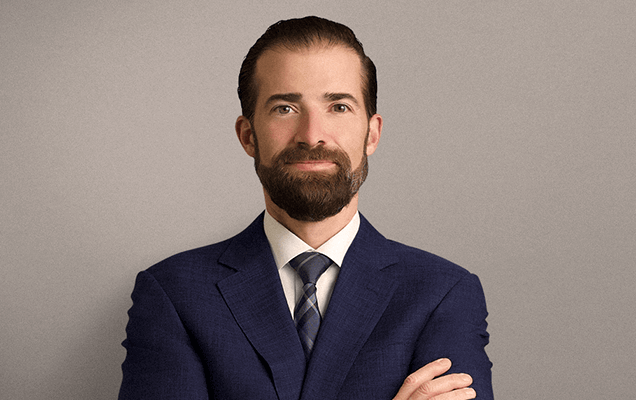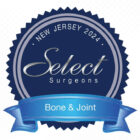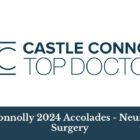It’s not uncommon for the first course of treatment for hemifacial spasm symptoms to be a medication regimen. In some cases, this proves to be adequate. However, if you’ve found no relief through pharmaceutical treatment of your hemifacial spasm symptoms, there is still hope.
The discomfort and embarrassment that arises from these involuntary movements can take a toll on your social and professional activities, making it difficult to interact with others. Innovations in surgical techniques and intervention can allow you to resume a normal, spasm-free life.
What Is Hemifacial Spasm?
Chronic twitching or spasming of facial muscles (with the absence of pain) is usually the strongest defining characteristic of hemifacial spasm. There are a number of causes for this disorder, including facial nerve compression from structures such as veins or arteries. It’s essential that you work with a doctor experienced in the diagnosis of hemifacial spasm to determine the underlying cause before you embark on any treatment.
Hemifacial Spasm Symptoms
Overall, hemifacial spasm manifests as a twitching of the muscles on one side of the face. It can be isolated to just the eyelid or be more widespread. In some cases, it is barely noticeable, while in others it can cause the mouth on the affected side to draw up or the eye to be forced closed.
Hemifacial spasm sufferers do not experience pain with the spasms. Nonetheless, it can be discomfiting and physically uncomfortable.
Surgical Treatment for Hemifacial Spasm
If drug therapies such as Botox injections have left you with less-than-satisfactory results or you’re looking for a more permanent solution, hemifacial spasm surgery may be the answer you’re looking for.
In the majority of cases, microvascular decompression (MVD) will be used to alleviate hemifacial spasm symptoms. It is considered the gold standard for many facial nerve disorders.
In MVD, a neurosurgeon will carefully remove a very small portion of the skull to be able to access the facial nerve. After isolating the affected nerve, he or she will carefully place a tiny Teflon sponge between the nerve and offending blood vessel, creating a buffer from the pounding of the vessel against the delicate nerve. This eliminates nerve irritation, allowing for the restoration of normal function. There are no numbing or deadening effects with this procedure.
The Pros of Hemifacial Spasm Surgery
The benefits of hemifacial spasm surgery far outweigh the potential risks. As with any surgery or procedure, the decision whether to undergo it is ultimately yours. If, however, you’re seeking non-pharmaceutical relief from your hemifacial spasm symptoms, surgical intervention is often going to be your best option.
No Sensation Compromise in the Face
Microvascular decompression surgery doesn’t compromise sensation in your face. With injections of neurolytic agents such as Botox, the nerve is essentially deadened so that no signals can be sent to the brain and muscles. This is why it is so easy to identify those that have had too much cosmetic Botox — they lack the ability to fully form facial expressions, having lost nerve function in the injection sites.
Long-term or permanent results
With hemifacial spasm surgery, you can experience long-term results with a single surgery. Compare this to years of medications or injections, trying to find the right balance, and it becomes a no-brainer. In most cases, the relief from your hemifacial spasm symptoms is permanent when you undergo MVD.
Instant relief of symptoms
With microvascular decompression surgery, you will typically experience relief of your symptoms right away. With other procedures, such as injections, it can take a bit of time for the neurolytic agent to take full effect, and it may not even begin to scratch the surface in some cases, leaving your face numb, yet still spasming.
Short recovery time
Microvascular decompression surgery often has a remarkably short recovery time for an intracranial surgery. Most people are back to many of their normal activities within 2 to 4 weeks.
High Success Rate
More than 91 percent of patients find relief. MVD has one of the highest cure rates of all hemifacial spasm treatments.
No readily visible scars.
Because of the location and small area of surgically altered skin, you will not have a noticeable scar from MVD. The average surgical site is about the size of a quarter.
Less time spent on appointments
If you lead a busy lifestyle, you can expect to save a tremendous amount of time from the regular treatments you would need to undergo using a method such as Botox injections. Once you’re recovered, you can expect to have semi-regular checkups every 6 months to a year after the initial surgical recovery time.
The Cons of Hemifacial Spasm Surgery
The above outlines some of the best reasons for having hemifacial spasm surgery. So what are the cons? While there aren’t many, there are a few things you should know about so you’re completely prepared.
Cases Where MVD is Not Completely Effective
Although very rare, there are a few cases where MVD surgery is not possible. This can happen for a variety of reasons. Even if you’re interested in MVD, you may be a poor candidate for a successful surgery, due to the root cause of your hemifacial spasm or if you are unable to withstand general anesthesia.
This can be predetermined by imaging tests such as a FIESTA MRI and a physical exam performed prior to surgery. However, this is rare and should not be a reason to write off the possibility of MVD. Just be sure to have an open discussion with your surgeon about alternatives if MVD is proven to be a poor choice for you.
Potential infection
As with any surgery, there is a slight risk for infection. If your doctor feels you are at risk, or that this is a concern, an open discussion on this and any other concerns should be scheduled prior to surgery.
Hearing Loss
Hearing loss has occasionally been noted with MVD. Rare in occurrence, these symptoms typically dissipate over time.
Need for a Second Surgery
In a few cases, some individuals have to undergo a second procedure to fully reap the benefits. This is incredibly rare and in many cases depends on the experience of the surgeon — another important reason to make sure you are fully comfortable with your surgical care provider!
Surgery can be a scary proposition but armed with the right information, you may find it’s the best decision you ever made. Freedom from your hemifacial spasm symptoms is within your reach — you just need to take a first step toward exploring the option of microvascular decompression.


About Dr. Anthony D'Ambrosio
Dr. Anthony D'Ambrosio is an accomplished neurosurgeon in North Jersey and a proud member of Neurosurgeons of New Jersey practicing primarily out of their Ridgewood office conveniently located on East Ridgewood Avenue. Dr. D’Ambrosio focuses his clinical practice on brain tumors, nervous system disorders, and facial pain disorders. He has expertise in a variety of complex surgical and radiosurgical techniques as well as minimally invasive procedures intended to successfully treat complex diseases of the brain. These techniques include micro-neurosurgery, microvascular decompression surgery and Gamma Knife radiosurgery. He's authored over 25 peer-reviewed journals and is the recipient of many awards.
Please call today to schedule a consultation with me. (551) 284-3265
Request a consultation with Dr. D'Ambrosio






